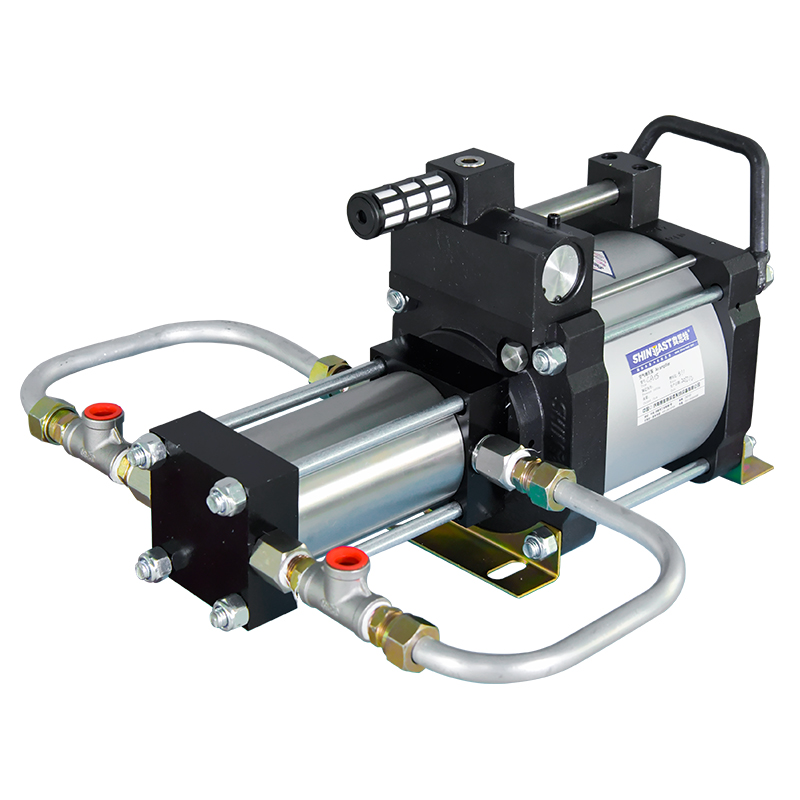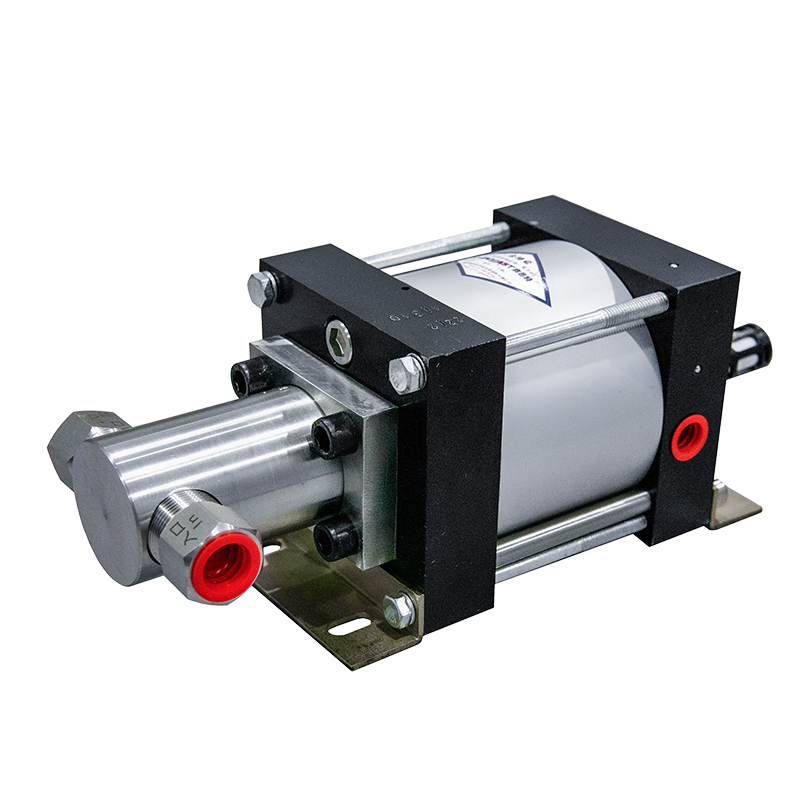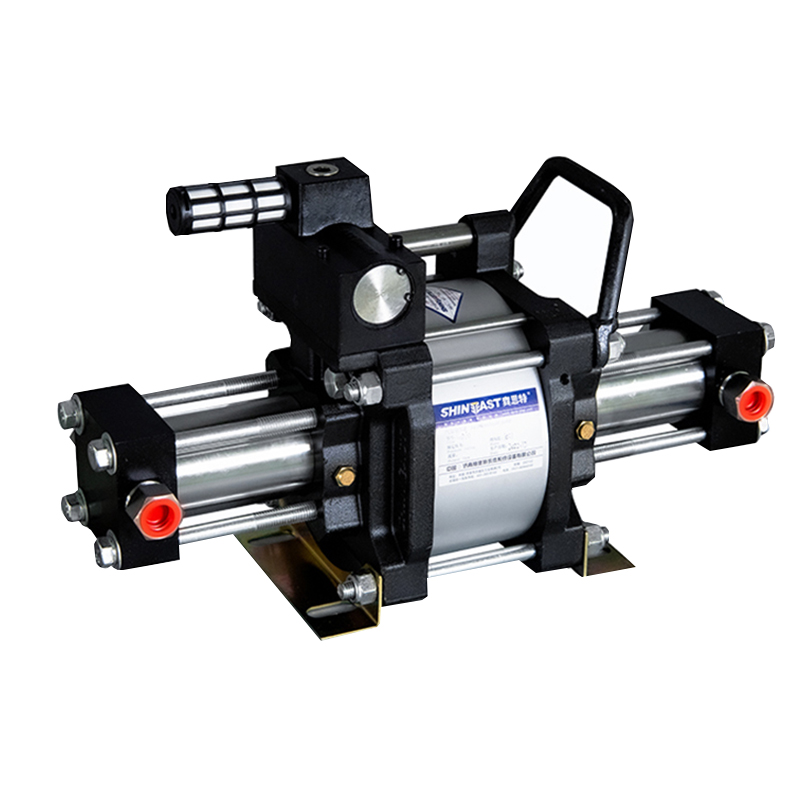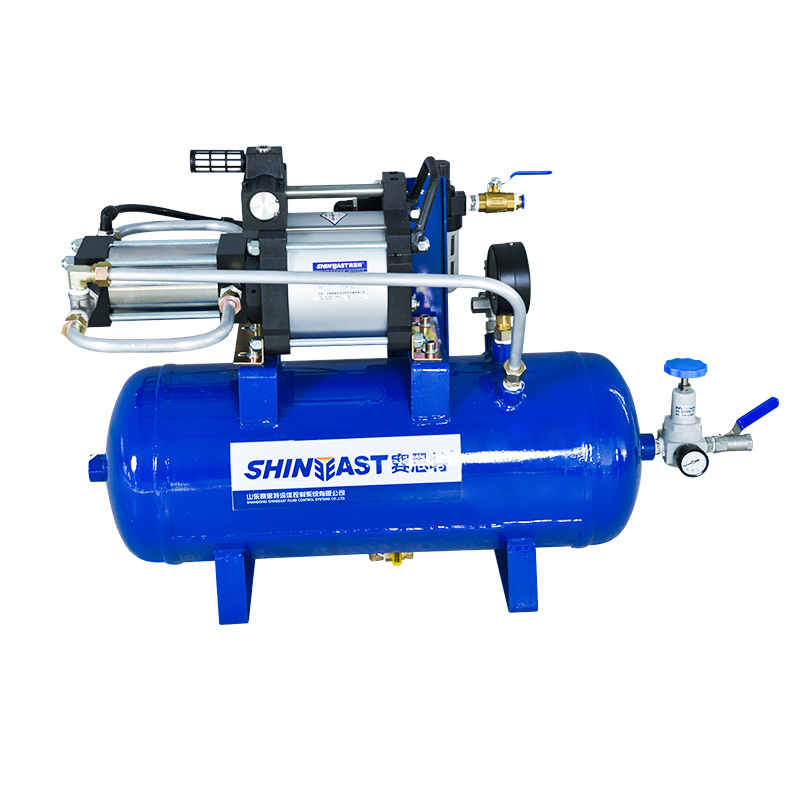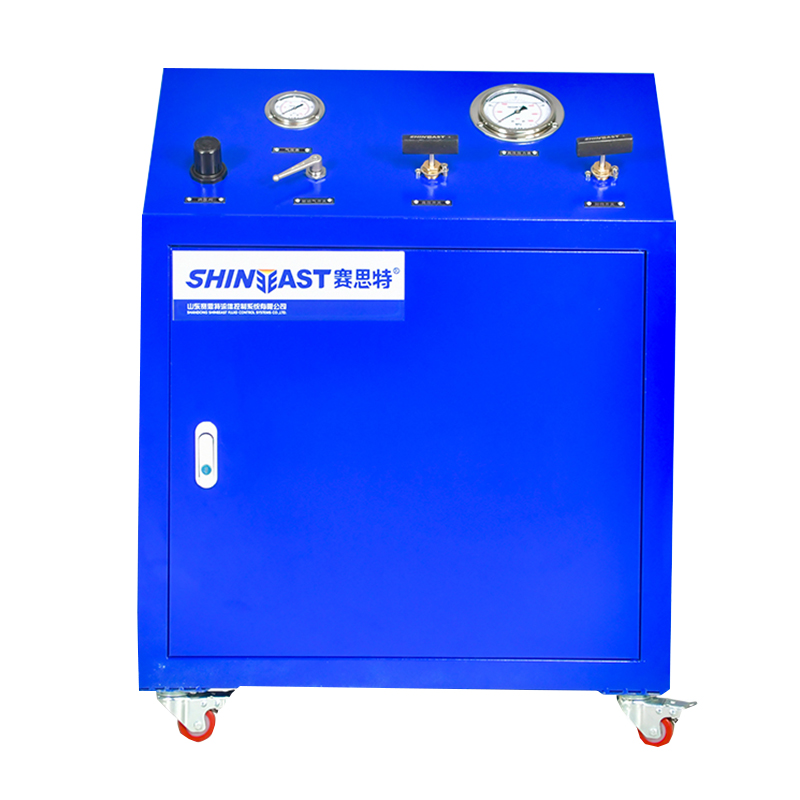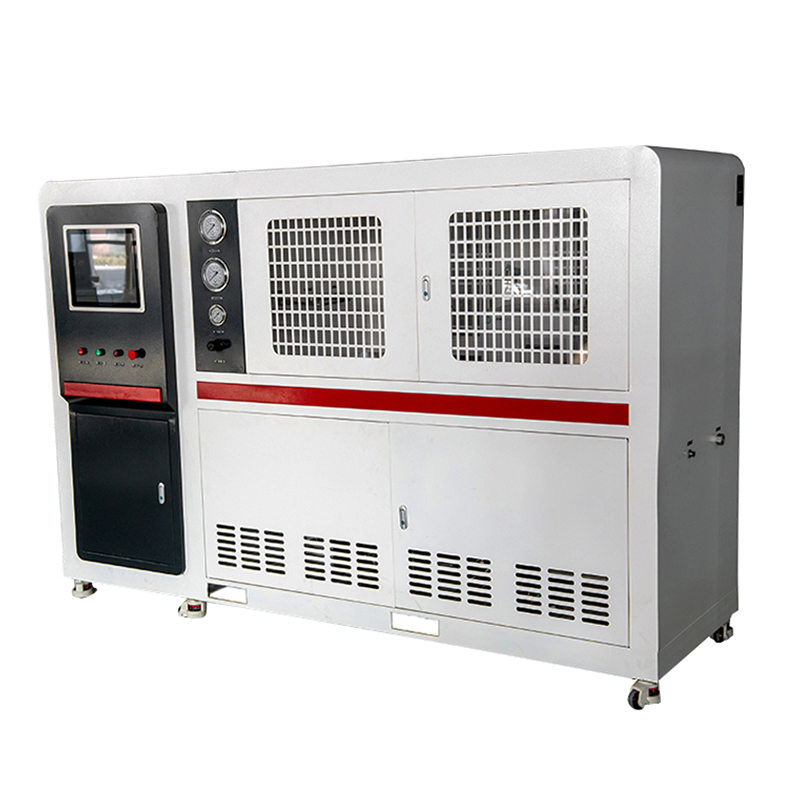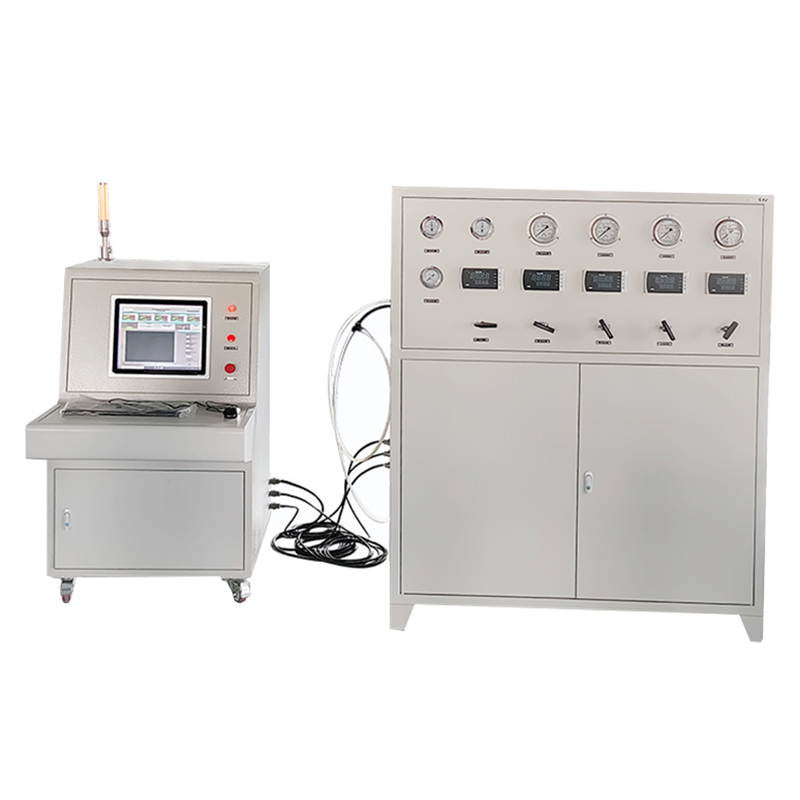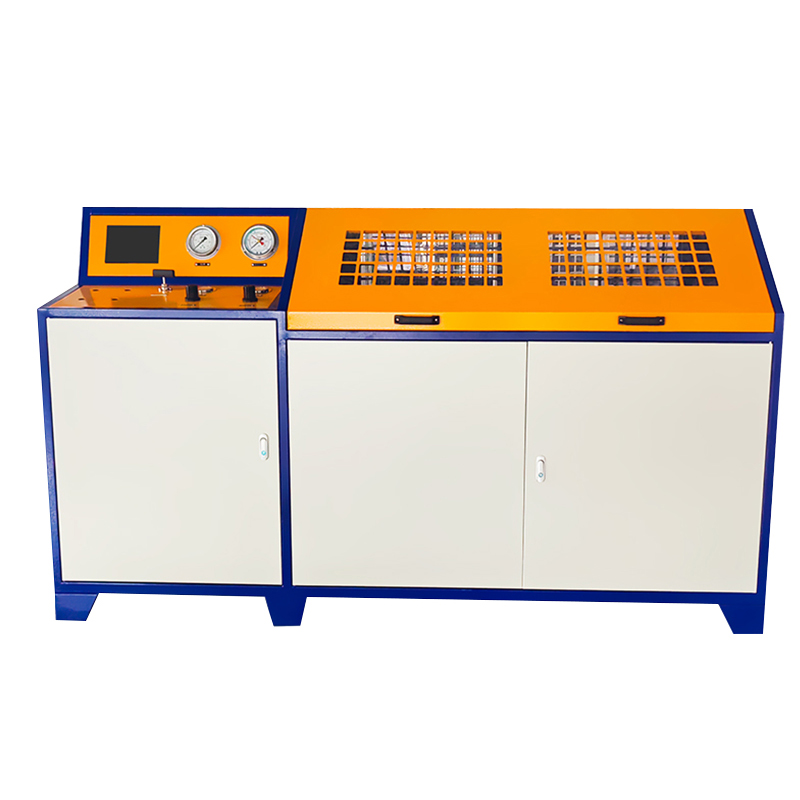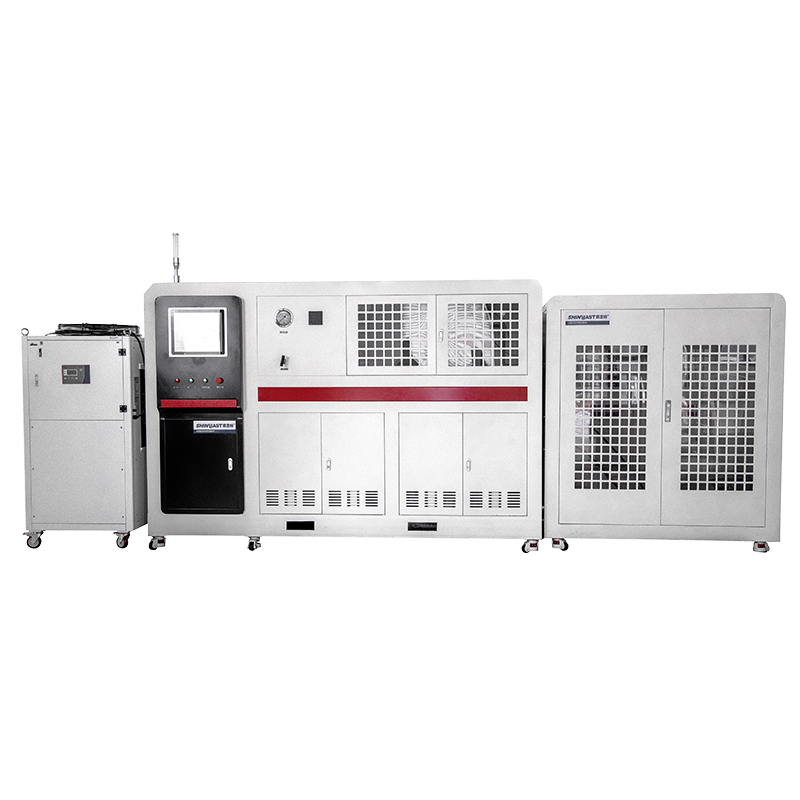What should be paid attention to when cleaning the gas pressurization system
The gas pressurization system uses compressed air as the power to pressurize air, oxygen, nitrogen, argon, helium, etc., with pressurization ratios of 2:1 and 5:1 (that is, twice or five times the pressurization of the pressurized medium). The device is an independent pressurization unit, which is connected in series in the pressurized pipeline. It has the characteristics of fast pressurization speed, long service life, stable pressure, large flow, simple operation, convenient maintenance and safe use.
After the gas pressurization system has been used for a long time, there will be a lot of dust inside and outside. At this time, it is necessary to clean the gas pressurization system. What aspects should be paid attention to when cleaning the gas pressurization system?
When cleaning the gas pressurization system, special attention should be paid to the following aspects to ensure that the cleaning process will not damage the equipment and that the system can operate normally after cleaning.
1. select appropriate cleaning agent
Type of cleaning agent: select a cleaning agent compatible with the material of the gas pressurization system. Different system materials have different requirements for cleaning agents. Ensure that the cleaning agent will not cause corrosion, dissolution or other damage to the materials in the system.
Environment friendly: environmental friendly, non-toxic, low volatile and biodegradable cleaning agents are preferred to avoid negative effects on operators and the environment.
2. completely drain the system
Turn off the air supply: before cleaning, make sure that the air supply has been cut off and the gas in the system has been drained. During cleaning, it is necessary to avoid gas residue and ensure that there is no pressure inside the system.
Disassembly of connectors: for parts that are easy to be cleaned (such as filters, valves, etc.), they can be disassembled first for separate cleaning.
3. cleaning sequence
Start from the air source end: the cleaning shall start from the gas input end and gradually clean to other parts of the system. This ensures that the cleaning agent and dirt flow out smoothly and will not accumulate inside the system.
Clean each component one by one, including filter, pneumatic motor, cylinder, pipeline, valve, etc. Each component shall be cleaned according to its use (such as spray cleaning, immersion, ultrasonic cleaning, etc.).
4. avoid residual detergent
Thorough flushing: during the cleaning process, a large amount of clean water or designated solvent shall be used to thoroughly flush to ensure that the cleaning solution is completely discharged. The residual cleaning agent may affect the performance of the system, and even cause corrosion or blockage for subsequent operation.
Blow dry: after cleaning, use clean compressed air to blow dry the inside of the system, especially the parts easy to accumulate water such as pipes and valves.
5. check the tightness and components
Seal inspection: after cleaning, check whether all seals, O-rings and valves are in good condition to ensure that leakage will not be caused by improper operation or physical damage during cleaning.
Component damage inspection: some aging or damaged components may be exposed during cleaning. During the cleaning process, special attention shall be paid to the inspection of these parts, and the damaged parts shall be replaced in time to avoid failure when the system is re run.
6. pollution prevention
Prevent external pollutants from entering: ensure a clean environment of the system during cleaning, and prevent external dust or pollutants from entering the equipment, especially the pipeline and filtration system.
Clean operation: during cleaning, operators should wear clean gloves, masks, etc. to prevent oil or dust on hands from polluting the equipment.
7. ensure safety
Safety protection: wear appropriate protective equipment during cleaning, such as glasses, gloves, masks, etc. Cleaning agents and solvents may be irritating to skin and eyes, so special attention should be paid to operation safety.
Avoid misoperation: during the cleaning process, pay attention to cut off the air source to ensure that the system will not start accidentally or other hazards will occur before and after the operation.
8. test after cleaning
System test: after cleaning, carry out system pressure test and leakage detection to ensure that all components work normally and have no leakage. By operating the system and monitoring its pressure, flow and other parameters, ensure that the system returns to normal operation after cleaning.
Function inspection: check whether the function of each component is restored to normal, including the working state of booster pump, filter, cylinder, etc., to ensure that the equipment is restored to the best state.
9. regular cleaning and maintenance
Regular inspection and maintenance: the gas pressurization system shall be cleaned and maintained regularly according to the service conditions. The cleaning frequency can be adjusted according to the working environment, service life, gas quality and other factors of the system.
After the gas pressurization system has been used for a long time, there will be a lot of dust inside and outside. At this time, it is necessary to clean the gas pressurization system. What aspects should be paid attention to when cleaning the gas pressurization system?
When cleaning the gas pressurization system, special attention should be paid to the following aspects to ensure that the cleaning process will not damage the equipment and that the system can operate normally after cleaning.
1. select appropriate cleaning agent
Type of cleaning agent: select a cleaning agent compatible with the material of the gas pressurization system. Different system materials have different requirements for cleaning agents. Ensure that the cleaning agent will not cause corrosion, dissolution or other damage to the materials in the system.
Environment friendly: environmental friendly, non-toxic, low volatile and biodegradable cleaning agents are preferred to avoid negative effects on operators and the environment.
2. completely drain the system
Turn off the air supply: before cleaning, make sure that the air supply has been cut off and the gas in the system has been drained. During cleaning, it is necessary to avoid gas residue and ensure that there is no pressure inside the system.
Disassembly of connectors: for parts that are easy to be cleaned (such as filters, valves, etc.), they can be disassembled first for separate cleaning.
3. cleaning sequence
Start from the air source end: the cleaning shall start from the gas input end and gradually clean to other parts of the system. This ensures that the cleaning agent and dirt flow out smoothly and will not accumulate inside the system.
Clean each component one by one, including filter, pneumatic motor, cylinder, pipeline, valve, etc. Each component shall be cleaned according to its use (such as spray cleaning, immersion, ultrasonic cleaning, etc.).
4. avoid residual detergent
Thorough flushing: during the cleaning process, a large amount of clean water or designated solvent shall be used to thoroughly flush to ensure that the cleaning solution is completely discharged. The residual cleaning agent may affect the performance of the system, and even cause corrosion or blockage for subsequent operation.
Blow dry: after cleaning, use clean compressed air to blow dry the inside of the system, especially the parts easy to accumulate water such as pipes and valves.
5. check the tightness and components
Seal inspection: after cleaning, check whether all seals, O-rings and valves are in good condition to ensure that leakage will not be caused by improper operation or physical damage during cleaning.
Component damage inspection: some aging or damaged components may be exposed during cleaning. During the cleaning process, special attention shall be paid to the inspection of these parts, and the damaged parts shall be replaced in time to avoid failure when the system is re run.
6. pollution prevention
Prevent external pollutants from entering: ensure a clean environment of the system during cleaning, and prevent external dust or pollutants from entering the equipment, especially the pipeline and filtration system.
Clean operation: during cleaning, operators should wear clean gloves, masks, etc. to prevent oil or dust on hands from polluting the equipment.
7. ensure safety
Safety protection: wear appropriate protective equipment during cleaning, such as glasses, gloves, masks, etc. Cleaning agents and solvents may be irritating to skin and eyes, so special attention should be paid to operation safety.
Avoid misoperation: during the cleaning process, pay attention to cut off the air source to ensure that the system will not start accidentally or other hazards will occur before and after the operation.
8. test after cleaning
System test: after cleaning, carry out system pressure test and leakage detection to ensure that all components work normally and have no leakage. By operating the system and monitoring its pressure, flow and other parameters, ensure that the system returns to normal operation after cleaning.
Function inspection: check whether the function of each component is restored to normal, including the working state of booster pump, filter, cylinder, etc., to ensure that the equipment is restored to the best state.
9. regular cleaning and maintenance
Regular inspection and maintenance: the gas pressurization system shall be cleaned and maintained regularly according to the service conditions. The cleaning frequency can be adjusted according to the working environment, service life, gas quality and other factors of the system.
CONTACT US
Please use the form below to get in touch.
If you need a reply we will get in touch as soon as possible.

